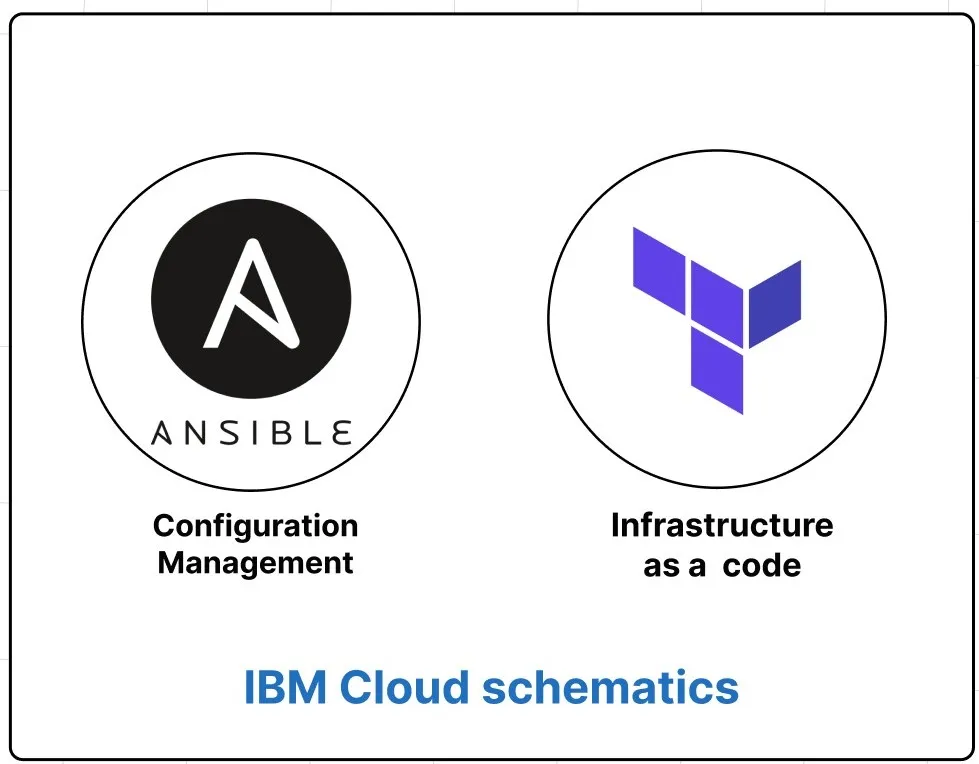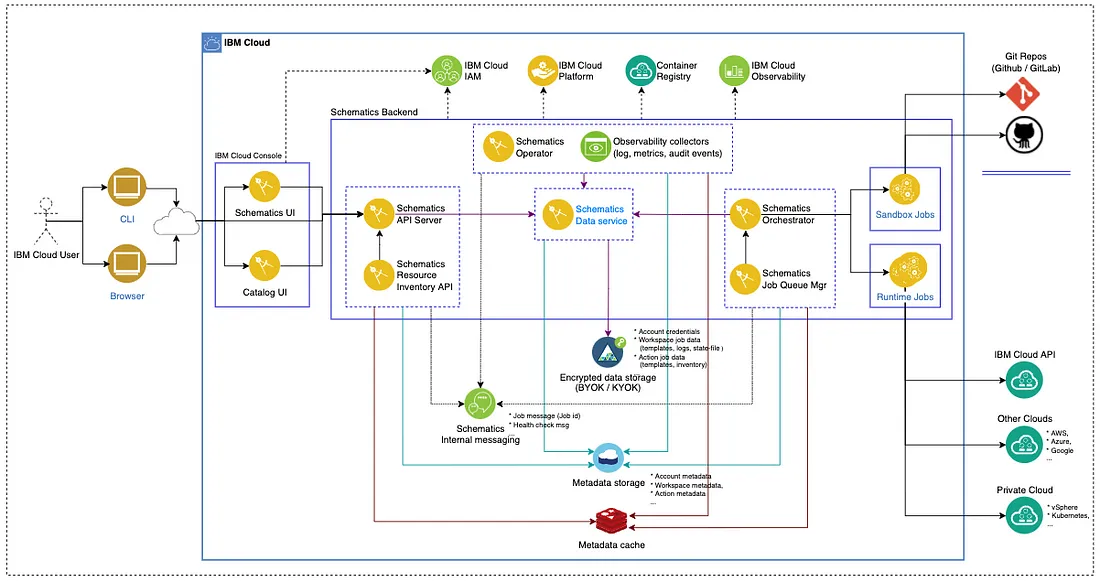IBM Cloud Schematics: One DevOps Tool for IaC & Configuration Management
Bron: artikel integraal overgenomen van medium.com
Origineel auteur: Vikas Upadhyaya

The Challenge of Using Multiple Tools
In the world of Cloud & DevOps, we often rely on various tools to meet our infrastructure and configuration needs. For example, we might use one tool for provisioning infrastructure resources and another tool for managing and enforcing configurations. This fragmented approach can lead to inefficiencies, increased complexity, and a steep learning curve for team members who need to juggle multiple tools.
IBM Cloud Schematics
IBM Cloud Schematics is a handy tool designed to automate the deployment and management of cloud resources on the IBM Cloud platform. It allows you to define your infrastructure as code (IaC) using popular tools like Terraform and Ansible. By describing your desired infrastructure state in code, you gain the power to automate the provisioning process and eliminate manual configurations.
Why Choose IBM Cloud Schematics?
- One Tool for Multiple Purposes: One of the biggest advantages of IBM loud Schematics is its versatility. It serves as a single tool for both IaC and configuration management. Whether you need to provision new infrastructure resources or manage the configuration of existing resources, IBM Cloud Schematics has got you covered. This eliminates the need for multiple tools, simplifying your DevOps toolchain and reducing complexity.
- Easy Infrastructure Deployment: IBM Cloud Schematics leverages popular tools like Terraform and Ansible to define and deploy your infrastructure. With these tools, you can express your desired infrastructure state using simple and human-readable code. The automation capabilities of IBM Cloud Schematics take care of the rest, saving you time and effort.
- Configuration Consistency: Configuration management is a crucial aspect of maintaining a stable and reliable infrastructure. With IBM Cloud Schematics, you can easily manage and enforce configuration consistency across your cloud resources. You can define and apply configuration changes in a systematic and controlled manner, ensuring that your resources are always in the desired state.
- Collaboration and Control: IBM Cloud Schematics provides collaboration features that enhance teamwork and enable seamless cooperation. You can easily share your infrastructure code templates with team members, track changes using version control, and manage access controls. This fosters collaboration while maintaining control over your infrastructure configurations.
I believe that by now, most of you have already decided whether it will be helpful for you. If not, don’t worry, we will discuss it in more depth.
Architectural flow
The Schematics architecture includes the following components:
- Main components of Schematics.
- How these components interact with each other.
- Key Management services that are used.
- Usage of IBM Cloud observability services to monitor and track performance.
- The role of runtime jobs in interacting with different cloud platforms such as vSphere, Kubernetes, AWS, Google Cloud, and more.

Schematics is a service that is shared among multiple users. When you start using Schematics, it automatically creates a new instance of the service for your user account.
The Benefits of IBM Cloud Schematics
- Faster time to production: With all-in-one tools, you can speed up the process of provisioning infrastructure and automate tasks across any cloud platform. This means you can get your applications up and running quickly, reducing time to production and delivering value to your users faster.
- Improved consistency: By using all-in-one tools, you eliminate the risk of having mismatched environments between the development, testing, and deployment stages. This ensures that your applications work consistently across different environments, reducing errors and improving reliability.
- More efficient development: All-in-one tools accelerate every phase of the software delivery lifecycle. Whether it’s provisioning sandboxes for development or setting up environments for QA testing, these tools streamline the process, saving time and making development more efficient.
- Improved return on investment (ROI): By using all-in-one tools, you can free up your team from manual tasks and take full advantage of the consumption-based cost structure offered by cloud computing. This means you only pay for the resources you actually use, optimizing your costs and maximizing your return on investment.
Now, I believe we should also discuss the use cases, as they play a significant role.
Use Cases:
There are three major use cases to be considered:
- Automating Infrastructure as Code (IaC)
- Automating Configuration Management
- Enabling Continuous Delivery (CD)
In our upcoming blog, we will explore how to set up semantics on IBM Cloud. Stay tuned to learn the step-by-step process and unlock the power of semantics in your cloud environment.
